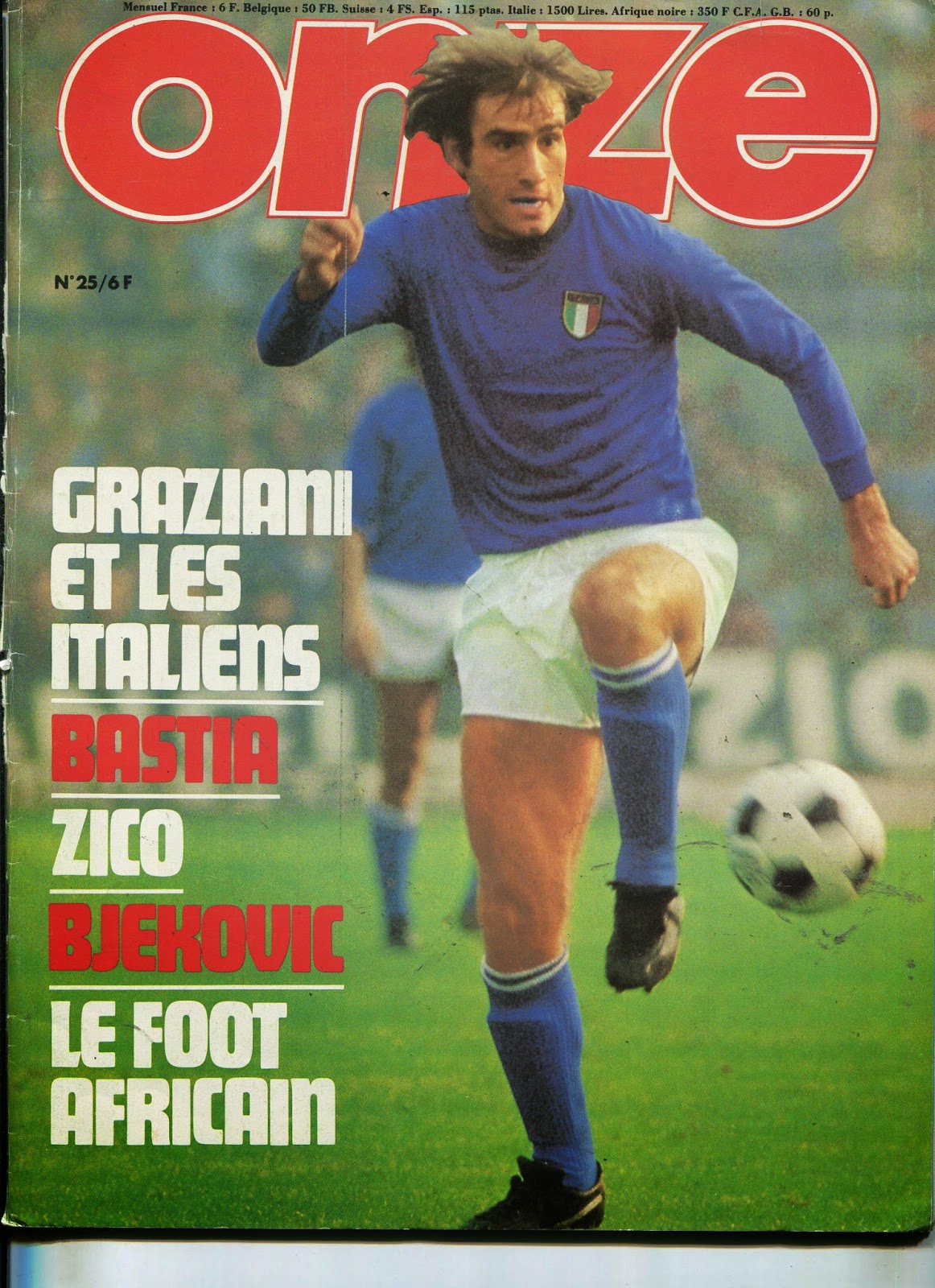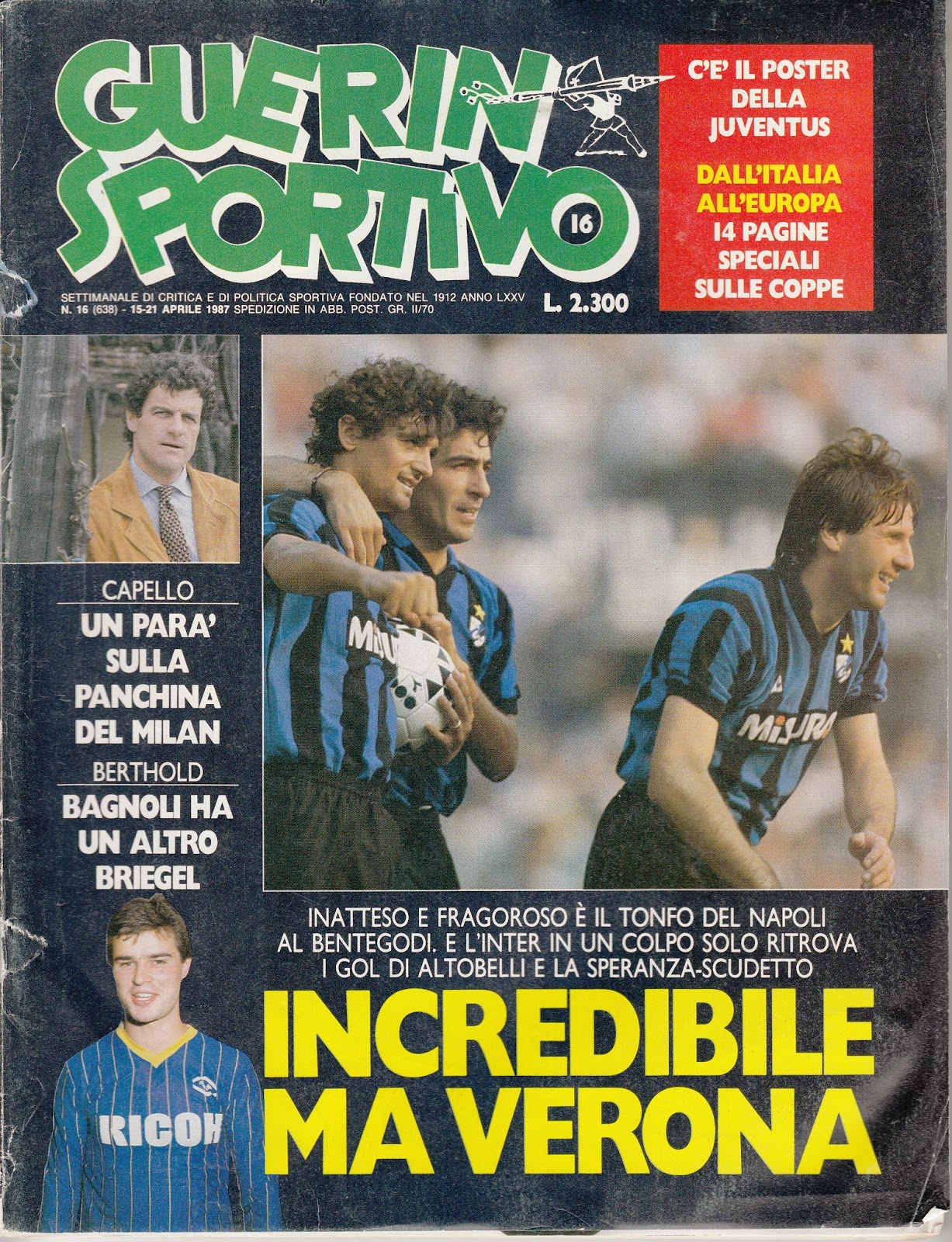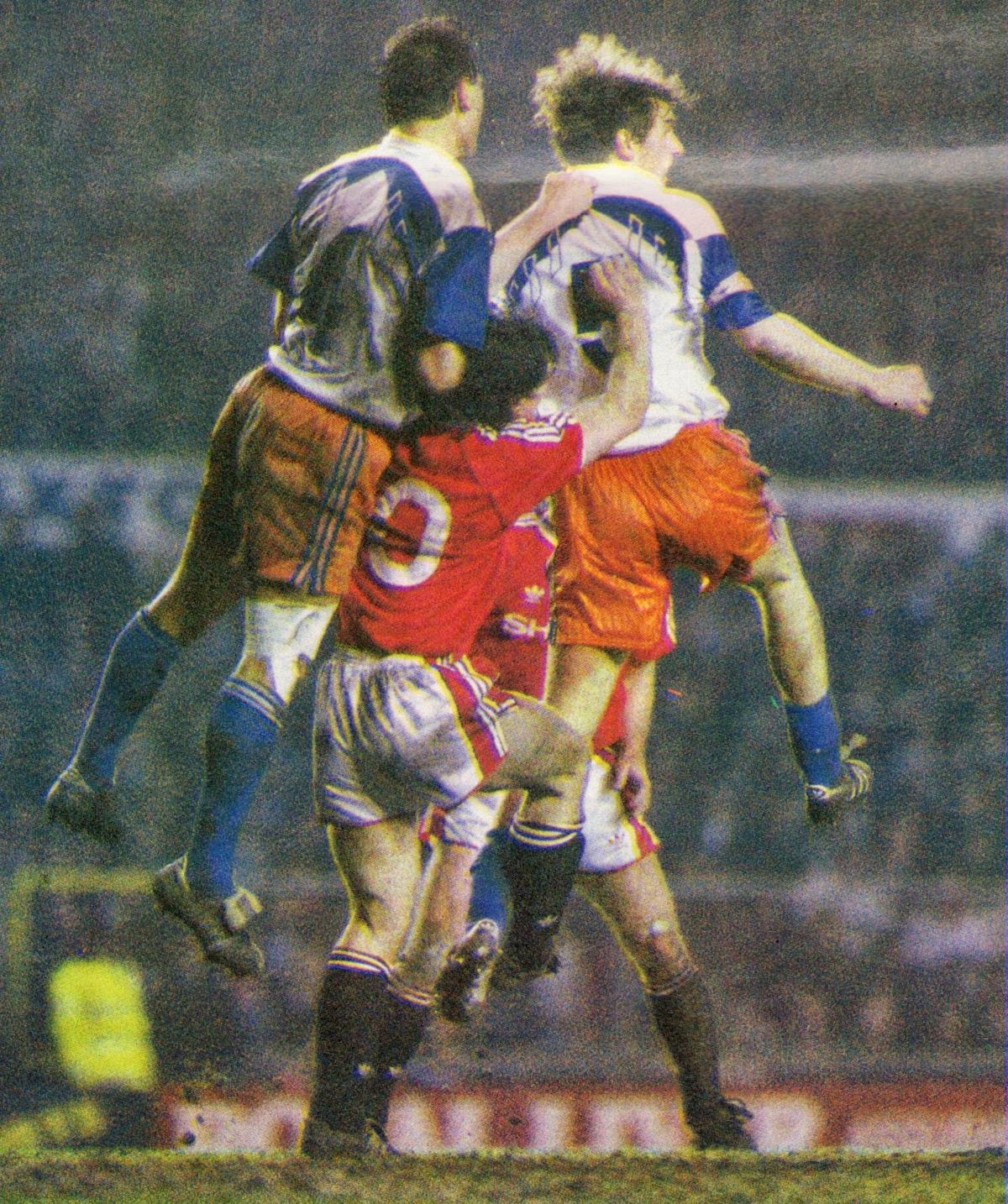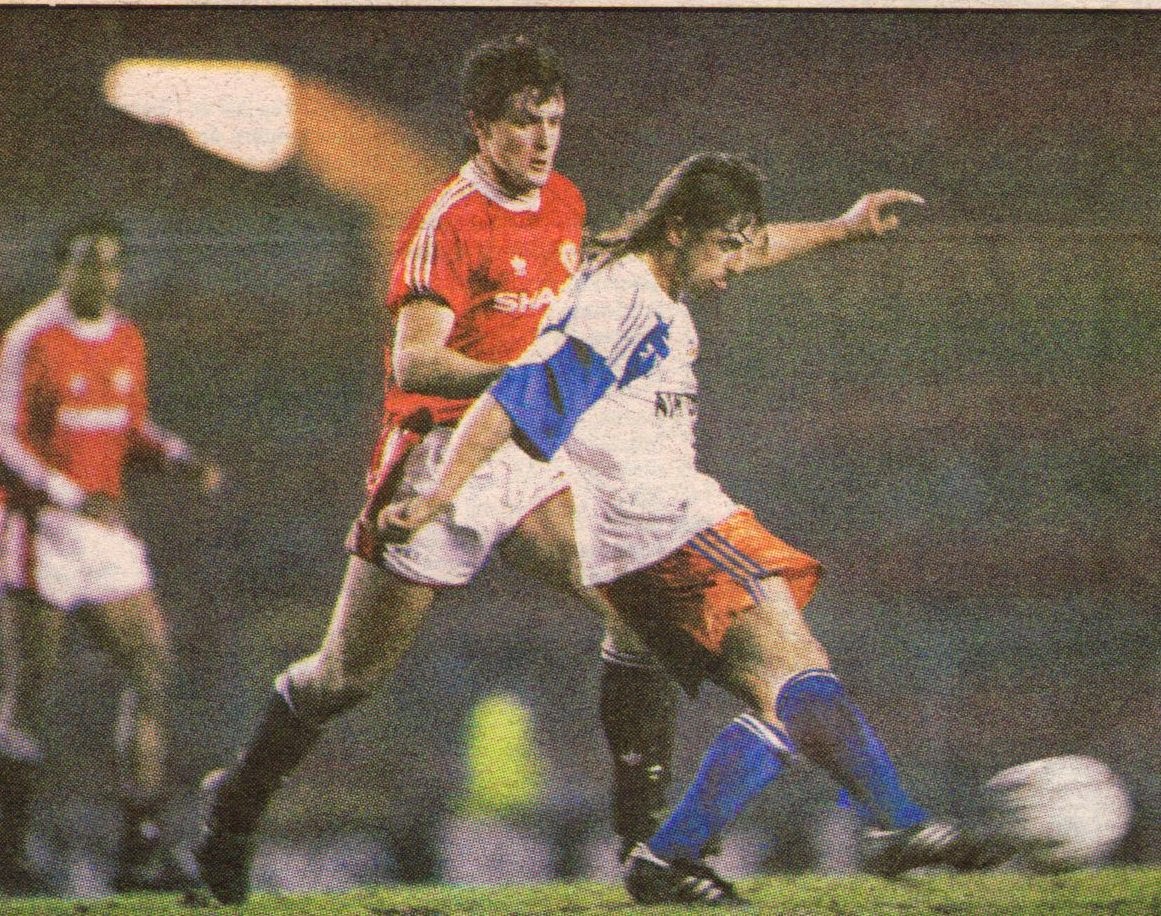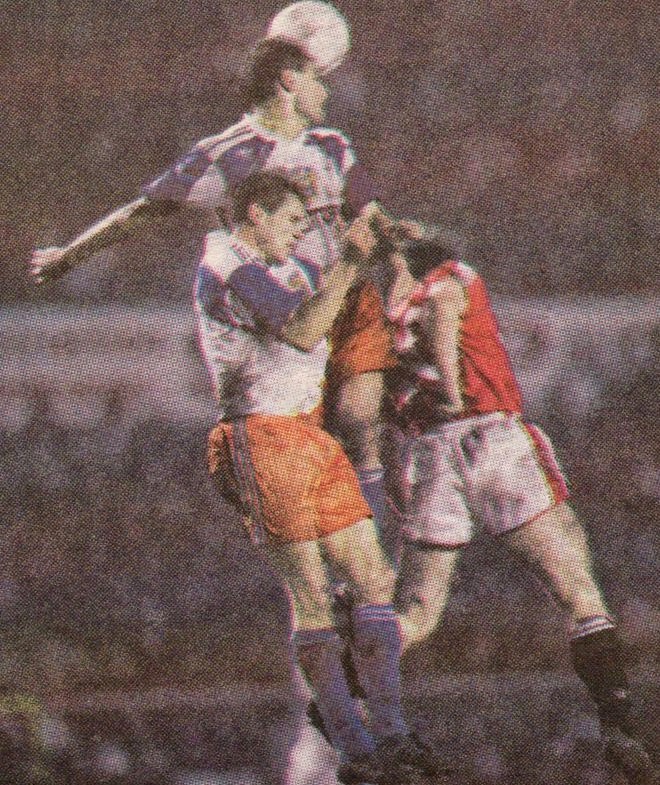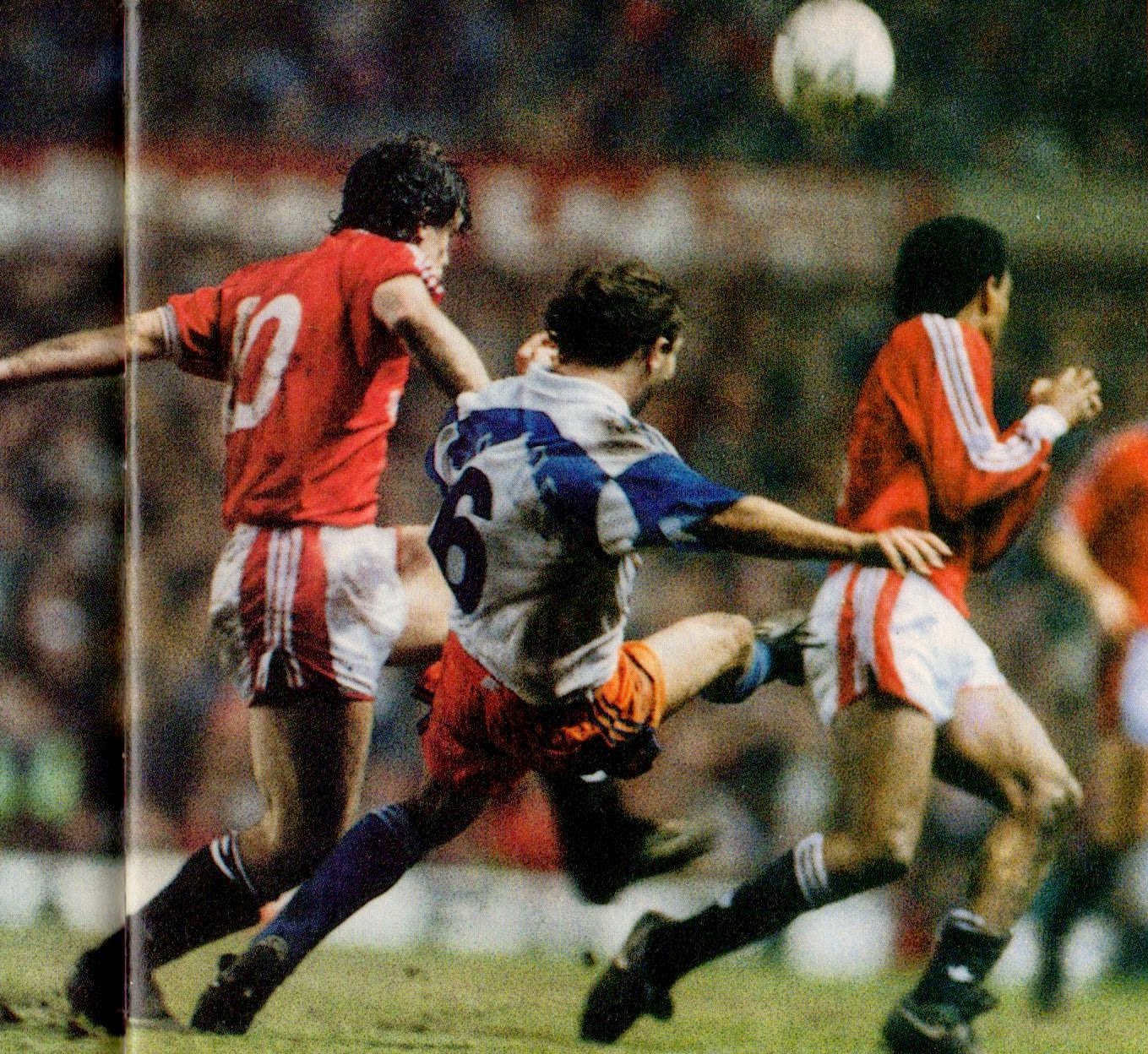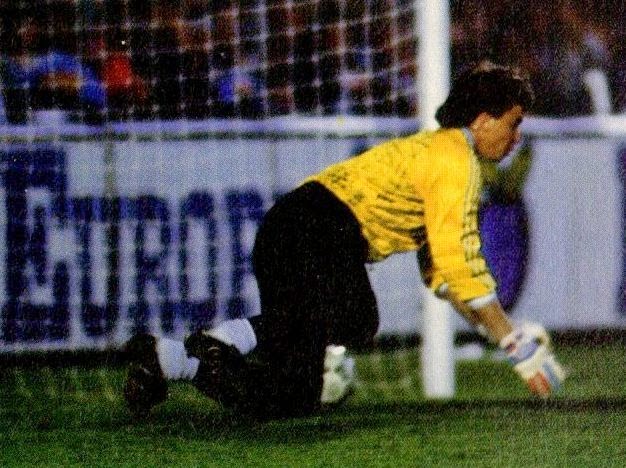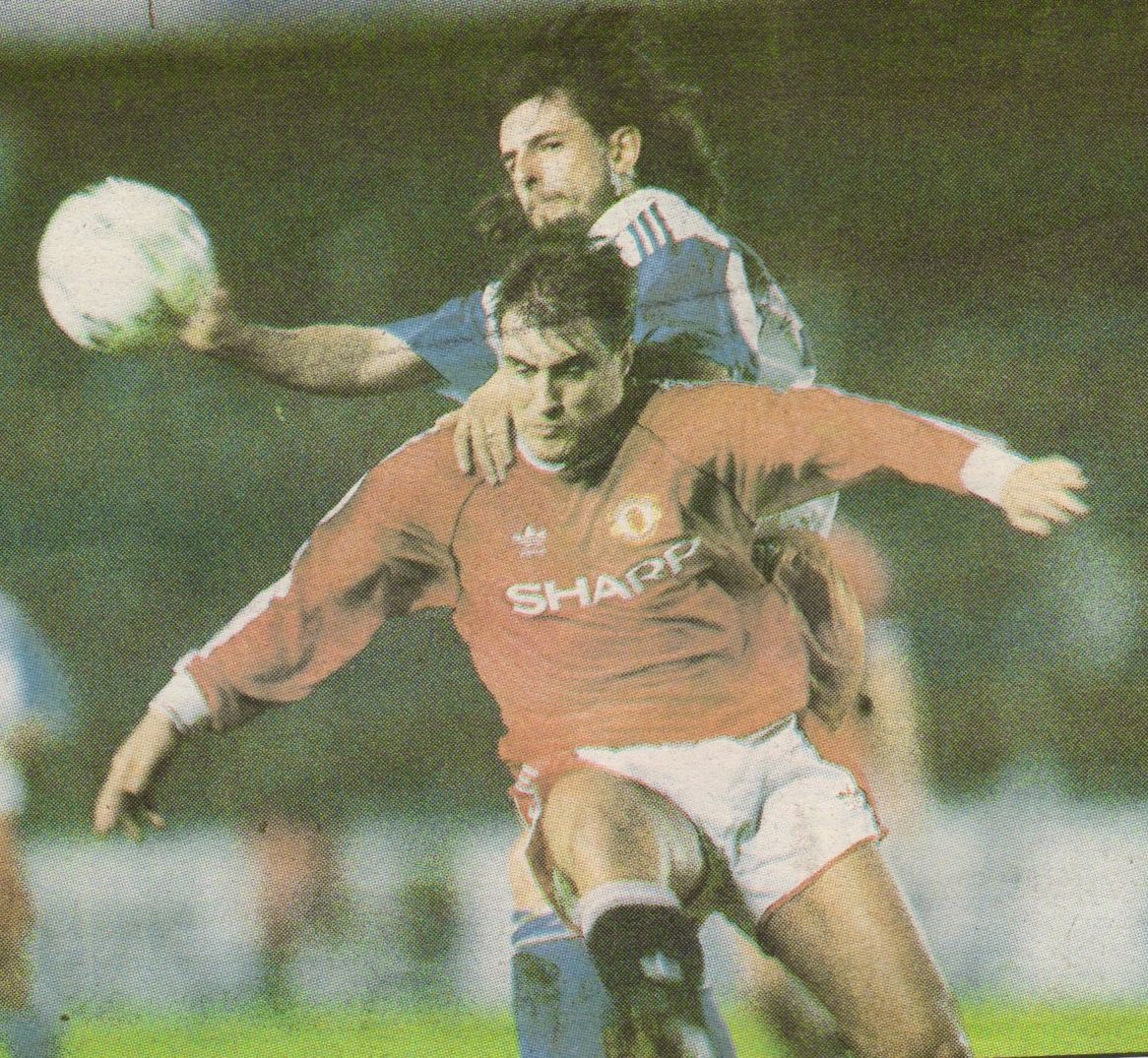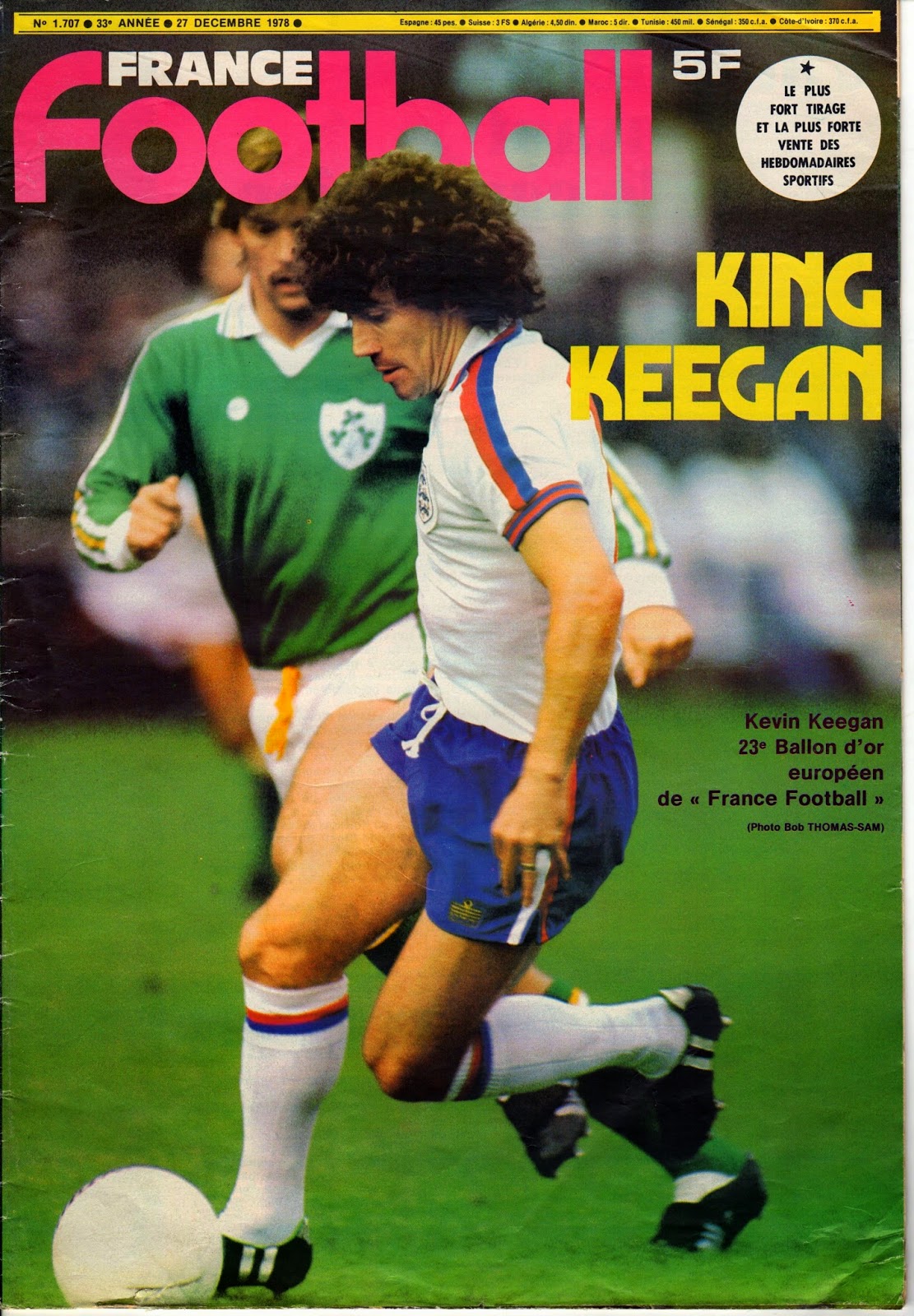Manchester United and Montpellier were paired in the Quarterfinals of the 1990/91 Cup Winners Cup.
The English Club Manchester United, managed by Alex Ferguson, were along with Aston Villa, the first English clubs to play in Europe after the Heysel ban in 1985.
They were led by the injury prone skipper Bryan Robson and contained players such as Irish defender Dennis Irwin, Welshmen Clayton Blackmore and Mark Hughes, Scottish forward Brian McClair and solid reliable defender Steve Bruce.
They had qualified with relative ease from their opening two Rounds. The Hungarians of Pecsi were defeated home and away (2-0 and 1-0 respectively), and Welsh squad Wrexham were also defeated home and away (3-0 and 2-0 respectively).
They were lagging behind in the League and Europe was their only chance for any silverware.
The little known French side of Montpellier was the surprise team of the Tournament.
They were a mid-table team in the League, but still contained many talented players.
The team was managed by the Polish Henryk Kasperczak and was led by skipper and rising star Laurent Blanc.
The foreigners on their books were Colombian star Carlos Valderrama, Dutchman Wilbert Suvrijn and Polish Striker Jacek Ziober.
They had surprised everyone by eliminating in the first two rounds, two recent former European Champions, the Dutch powerhouse PSV Eindhoven (1-0 Home, 0-0 away) and Romania’s Steaua Bucharest (5-0 Home, 3-0 away).
The first leg, on March 6th, was played at Manchester’ Old Trafford Stadium.
Manchester United were missing regulars in defense through injury: Steve Bruce and Dennis Irwin.
![]() |
Photo From: France Football, Issue 2344, March 12, 1991 (Patrick Colleter and Clayton Blackmore) |
In their place Lee Martin and Mal Donaghy started.
International midfielder Neil Webb was also missing through injury.
![]() |
Photo From: France Football, Issue 2344, March 12, 1991 (Mark Hughes between Der Zakarian and Blanc)
|
Montpellier were missing Carlos Valderrama and naturally adopted a defensive set up for this away match.
![]() |
Photo From: France Football, Issue 2344, March 12, 1991 (Laurent Blanc and Bryan Robson) |
Manchester United scored right at the first minute. Lee Sharpe attacked from the left side, after a give and go with Hughes, he crossed for McClair to score.![]() |
Photo From: France Football, Issue 2344, March 12, 1991 (Brian McClair and Mark Hughes in front of the Montpellier goal) |
![]() |
Photo From: France Football, Issue 2344, March 12, 1991 (Daniel Xuereb’s late chance in front of Les Sealey)
|
But in the 8th minute, Ziober crossed from the left and Martin scored an own goal, even though they were no Montpellier players around him.![]() |
Photo From: France Football, Issue 2344, March 12, 1991 (Mark Hughes and Jacek Ziober) |
![]() |
Photo From: France Football, Issue 2346, March 26, 1991 (Pacal Baills walking off after being sent off)
|
In the 48th minute, Mark Hughes had an entanglement with Lemoult and as he got up, Pascal Baills pushed him and he was sent off.
Pascal Baills was sent after Mark Hughes.
![]() |
Photo From: France Football, Issue 2344, March 12, 1991 (Michel Der Zakarian heading) |
Manchester United did not take advantage fully of their man advantage at home despite having more chances.
![]() |
Photo From: France Football, Issue 2344, March 12, 1991 (Jean-Claude Lemoult and Mark Hughes) |
Daniel Xuereb nearly snatched a winner for Montpellier towards the end.
At this point it seemed Montpellier had the upper hand in the tie, with home field advantage coming up.
March 6, 1991
Manchester United Football Club (England) 1-Montpellier-Hérault Sports Club (France) 1
Cup Winners Cup- Quarterfinals, First Leg
Venue: Manchester-Old Trafford
Attendance: 41,950
Referee: Pierluigi Pairetto (Italy)
Goalscorers: (Manchester United): Brian McClair 1’
(Montpellier): Lee Martin (own goal) 8’
Lineups:
Manchester United:
1-Les Sealey, 3-Lee Martin (12-Danny Wallace 60th), 4-Mal Donaghy (Northern Ireland), 6-Gary Pallister, 2-Clayton Blackmore (Wales), 5-Mike Phelan, 8-Paul Ince, 7-Bryan Robson, 11-Lee Sharpe, 9-Brian McClair (Scotland), 10-Mark Hughes (Wales)
Coach: Alex Ferguson (Scotland)
Booked: Bryan Robson 31st
Team Captain: Bryan Robson
Official Kit Supplier/Designer: Adidas
Shirt Sponsor: Sharp
Uniform Colors: Red Shirts, White Shorts, Black Socks
Montpellier:
1-Claude Barrabe, 2-Pascal Baills, 5-Laurent Blanc, 4-Michel Der Zakarian, 3-Franck Lucchesi, 6-Jean-Claude Lemoult, 7-Wilbert Suvrijn (Holland) (12-Regis Brouard 88th), 10-Patrick Colleter, 8-Vincent Guerin, 9-Clement Garcia (15-Daniel Xuereb 85th), 11-Jacek Ziober (Poland)
Coach: Henryk Kasperczak (Poland)
Booked: Garcia 58th, Vincent Guerin 70th
Sent Off: Pascal Baills 48th
Team Captain: Laurent Blanc
Official Kit Supplier/Designer: Adidas
Shirt Sponsor: Air Littoral
Uniform Colors: White Shirts, Orange Shorts, Blue Socks
The second leg, on March 19th, was played at Montpellier’s Stade La Mosson.
For Montpellier, Carlos Valderrama was back in the squad.
Defender Michel Der Zakarian was out injured; it turned out he had played most of the first leg carrying an injury. Thetis came in his place.
Brouard took the place of the suspended Baills. Vincent Guerin learned very late from a letter by UEFA that he was suspended from this match.
His booking in the first leg was the second in the competition.
![]() |
Photo From: Onze-Mondial, Issue 27, April 1991 (Team captains Laurent Blanc and Bryan Robson) |
The suspensions of Baills and Guerin weakened Montpellier’s right side.
In contrast Manchester United were nearly in full strength as Irwin and Bruce were back in.
![]() |
Photo From: Onze-Mondial, Issue 27, April 1991 (Jean-Claude Lemoult between Mark Hughes and Paul Ince) |
![]() |
Photo From: World Soccer, April 1991 (Bryan Robson and Clayton Blackmore after the first goal) |
The turning point of this match occurred in the injury time of the first half. Clayton Blackmore’s took a free kick that Claude Barrabe let slip through his hands.
![]() |
Photo From: Onze-Mondial, Issue 27, April 1991 (Claude Barrabe committing his fatal error on the first goal) |
The devastated Barrabe was consoled at halftime by his Manchester counterpart Les Sealey who said ‘I’m Sorry’.
Early in the second half, Colleter fouled Blackmore in the penalty area and Bruce converted the kick.![]() |
Photo From: France Football, Issue 2346, March 26, 1991 (Clayton Blackmore and Jacek Ziober) |
![]() |
Photo From: Onze-Mondial, Issue 27, April 1991 (Thetis being sent off)
|
Montpellier had no way back and in the entire match had two chances.
Thetis also was sent off after an altercation with Hughes.![]() |
Photo From: France Football, Issue 2346, March 26, 1991 (Mike Phelan and Patrick Colleter) |
![]() |
Photo From: Onze-Mondial, Issue 27, April 1991 (Mike Phelan and Wilbert Suvrijn)
|
The volatile Montpellier owner Louis Nicollin was absolutely furious with Barrabe after his error and said that he better do his job properly in the League, otherwise he ‘ll return to Reunion (the island that Barrabe hailed from).
Manchester went on to the semifinals and after eliminating Legia Warsaw met Barcelona in the Final.
The triumph over Barcelona paved the way for two decades of unprecedented success under Alex Ferguson.
March 19, 1991
Montpellier-Hérault Sports Club (France) 0-Manchester United Football Club (England) 2
Cup Winners Cup- Quarterfinals, Second Leg
Venue: Montpellier-Stade La Mosson
Attendance: 23,000
Referee: Hubert Forstinger (Austria)
Goalscorers: (Montpellier): None
(Manchester United): Clayton Blackmore 45’+4’,
Steve Bruce (Penalty Kick) 51’
Lineups:
Montpellier:
1-Claude Barrabe, 5-Laurent Blanc, 2-Regis Brouard (15-Daniel Xuereb 57th), 4-Jean-Manuel Thetis, 3-Franck Lucchesi, 6-Jean-Claude Lemoult, 7-Wilbert Suvrijn (Holland), 8-Patrick Colleter, 10-Carlos Valderrama (Colombia), 9-Clement Garcia, 11-Jacek Ziober (Poland) (14-Patrice Garande 69th)
Coach: Henryk Kasperczak (Poland)
Booked: Wilbert Suvrijn 24th, Thetis 76th
Sent Off: Thetis 78th
Other Subs:
12-Jean-Jacques Nono
13-Franck Rizzetto
16-Phillipe Flucklinger
Team Captain: Laurent Blanc
Official Kit Supplier/Designer: Adidas
Shirt Sponsor: Air Littoral
Uniform Colors: White Shirts, Orange Shorts, Blue Socks
Manchester United:
1-Les Sealey, 2-Dennis Irwin (Republic of Ireland), 4-Steve Bruce, 6-Gary Pallister, 3-Clayton Blackmore (Wales), 5-Mike Phelan, 8-Paul Ince (14-Lee Martin 50th), 7-Bryan Robson, 11-Lee Sharpe, 9-Brian McClair (Scotland), 10-Mark Hughes (Wales)
Coach: Alex Ferguson (Scotland)
Booked: Bryan Robson 34th
Other subs:
12-Danny Wallace
13-Gary Walsh
15-Mal Donaghy (Northern Ireland)
16-Mark Robins
Team Captain: Bryan Robson
Official Kit Supplier/Designer: Adidas
Shirt Sponsor: Sharp
Uniform Colors: Red Shirts, White Shorts, Black Socks






